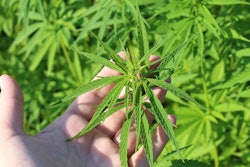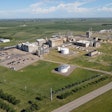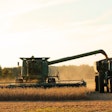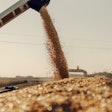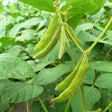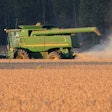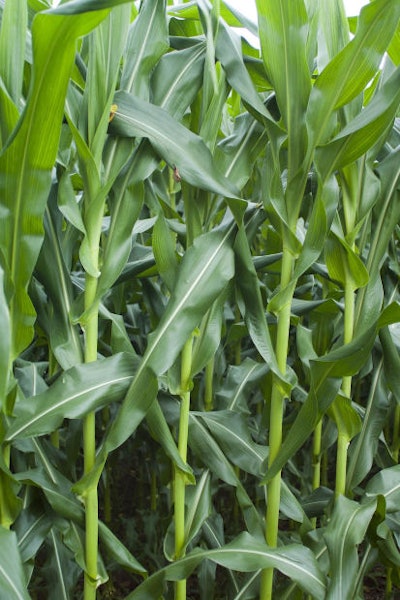
Corn prices have been declining for almost two years following the peak price generated by the very small U.S. crop in 2012. The recent sharp decline in prices has been associated with increasing prospects for a very large U.S. corn harvest again in 2014 following the record harvest of 2013. A second consecutive large crop would lead to a further build-up in stocks of corn by the end of the 2014-15 marketing year.
The important question is how burdensome are those stocks likely to be? The magnitude of year ending stocks will be determined by the size of old crop stocks on September 1, 2014, the actual size of the 2014 crop, and the strength of corn demand during the year ahead. The USDA's WASDE report released on July 11 reflects current USDA expectations for the 2014-15 marketing year. Stocks at the beginning of the marketing year are projected at 1.246 billion bushels, production is forecast at 13.86 billion bushels, consumption is forecast at 13.335 billion bushels, and year-ending stocks are projected at 1.801 billion bushels. Projections for all these categories will continue to change over the next several months.
The largest uncertainty about the magnitude of stocks at the beginning of the 2014-15 marketing year is the level of feed and residual use of corn this summer. To reach the revised USDA projection of 5.175 billion bushels for the year, use during the summer would need to total about 450 million bushels. That is well above the surprisingly low level of use the past two years, in line with use in the summers of 2010 and 2011, and well below the level of use prior to 2010. The projection seems reasonable. Exports of corn are on track to meet the USDA projection of 1.9 billion bushels for the year, while ethanol use is running ahead of the projected pace. If weekly ethanol production during the last nine weeks of the marketing year remained at the level of the week ended July 4, corn used for ethanol production for the entire marketing year would exceed the most recent USDA projection by 35 million bushels. Stocks of old crop corn on September 1 may be slightly less than the USDA projection.
The bigger question is the likely size of the 2014 U.S. corn crop. The USDA projected yield of 165.3 bushels is based on a weather adjusted trend model that assumes normal July growing conditions. The first survey-based yield projection will be released on August 12. The market expects that yield forecast to be much larger. An average yield of 170 bushels would produce a crop of 14.25 billion bushels, about 390 million bushels larger than the USDA projection, if harvested acreage equals the current projection.
Current conditions point to a crop larger than projected by USDA, but projections of corn consumption also appear a little conservative. Feed and residual use of corn during the year ahead is expected to be only 25 million bushels more than during the current year. A large crop points to a continuation of a large "residual" use of corn and record livestock profit margins could generate at least a modest expansion in livestock production. That expansion would have to be in the pork, poultry, or dairy sectors as the number of feeder cattle will remain limited. In addition, feed use of corn should be supported by the continuation of very high hog slaughter weights and by lower corn prices. Similarly, corn used for ethanol production could exceed the USDA projection of 5.05 billion bushels if ethanol exports continue to be supported by favorable ethanol prices relative to gasoline prices. Corn export prospects are more difficult to gauge. The USDA projection for a 200 million bushel year-over-year decline in U.S. exports also appears a little conservative in light of foreign production prospects.
If stocks of corn at the beginning of the 2014-15 marketing year are 25 million bushels less than projected, the crop is 400 million bushels larger than projected, and consumption is 100 million bushels more than projected in the July 11 WASDE report, year ending stocks would total about 2.075 billion bushels. Those stocks would represent 15.4 percent of total consumption of U.S. corn and about 17.7 percent of domestic consumption. The stocks-to-use ratios would be the largest since 2005-06 when ending stocks represented 17.5 percent of total consumption and 21.5 percent of domestic consumption of U.S. corn. The stocks-to-use ratios would be only slightly higher than the average for the 5-year period from 2005-06 through 2009-2010. Stocks during that period averaged 13.8 percent of total consumption and 16.7 percent of domestic consumption. That compares to the most recent 4-year averages of 8.3 percent and 9.4 percent, respectively.
So what price of corn is consistent with a more normal level of year ending stocks? The average price from 2006-07 through 2009-10 was $3.71. The average price of corn in 2005-06 was $2.00 per bushel, which was 83 percent of the average for the period from 1973-74 through 2005-06. We havepreviously arguedthat the average price for the new era of prices that began in 2006-07 would be about $4.60, so that $2.00 in 2005-06 is equivalent to $3.82 in the current era. An average price in the year ahead near $3.75 would be consistent with similar supply-consumption scenarios of the recent past. It appears that the market has already priced in an average yield of at least 170 bushels.
Issued byDarrel Good
Department of Agricultural and Consumer Economics
University of Illinois






